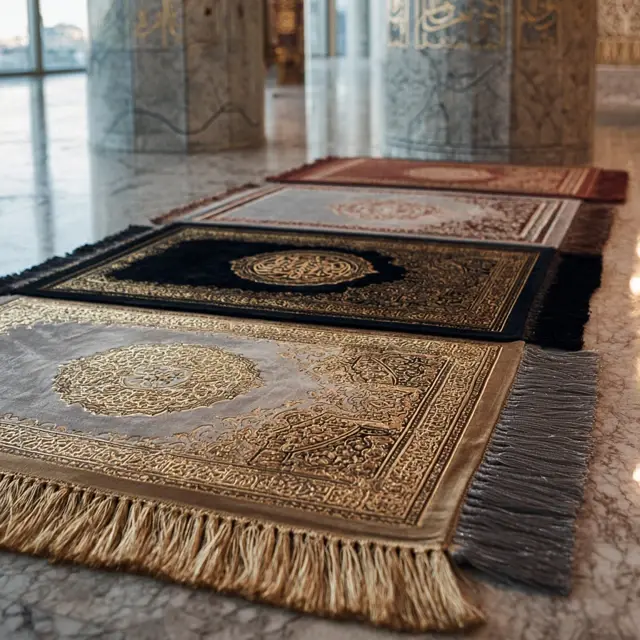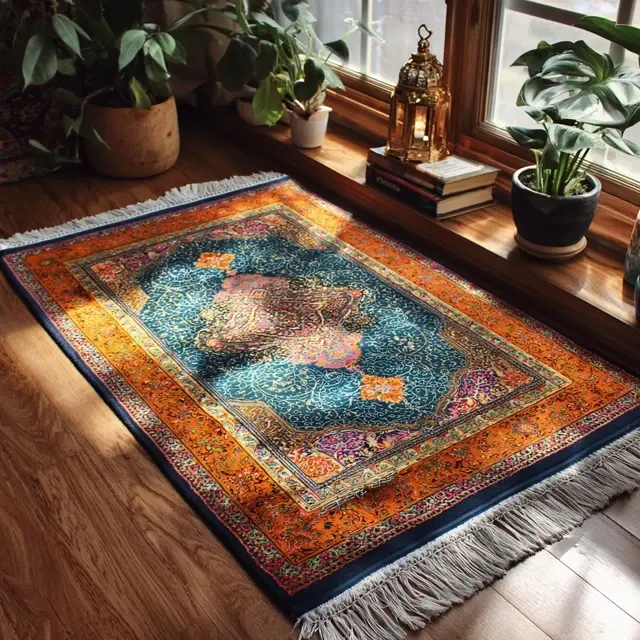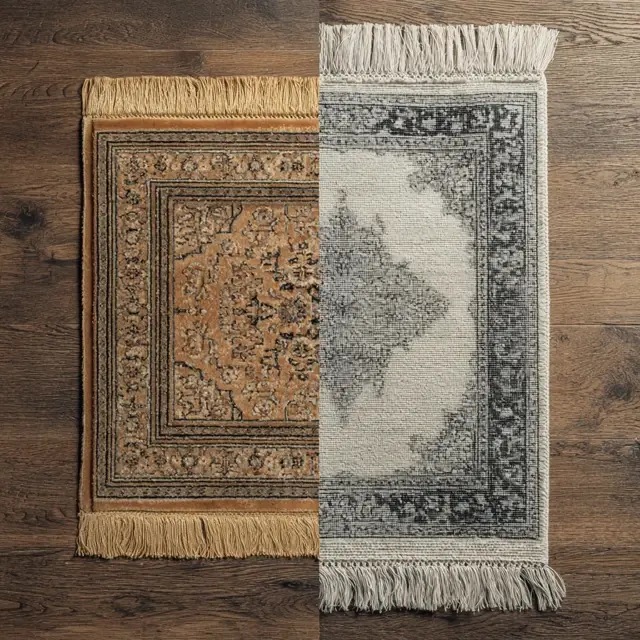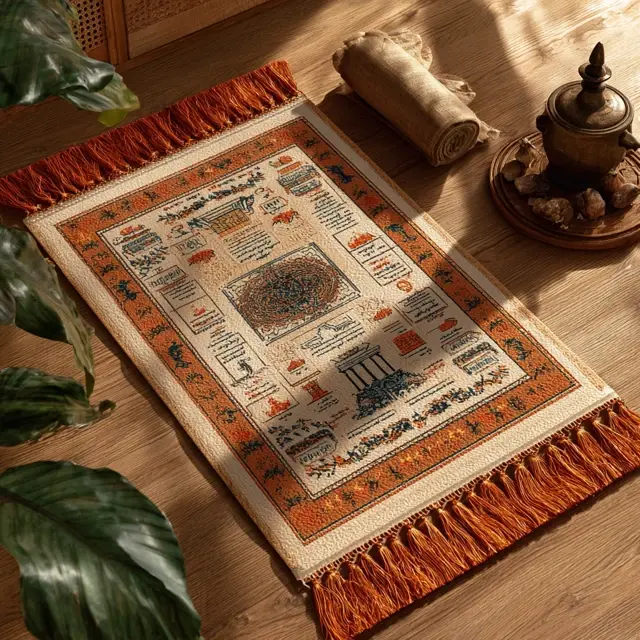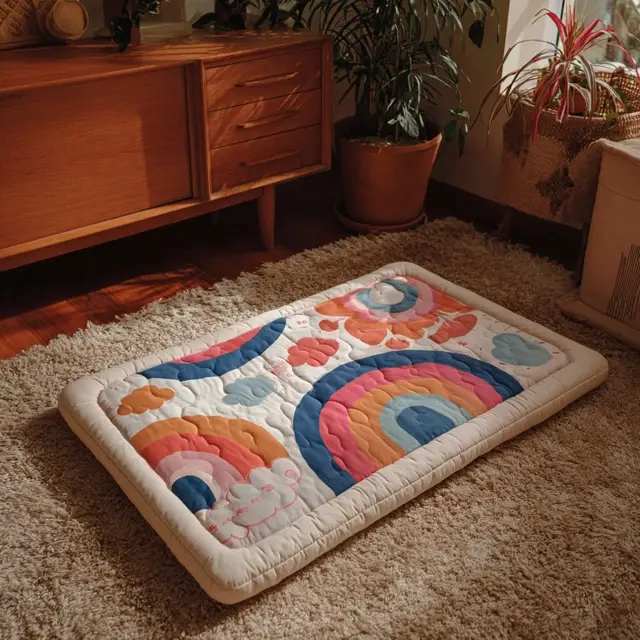Unique Prayer Mats with Cultural and Religious Significance
Prayer mats are more than just functional items—they are deeply rooted in cultural and religious traditions, often carrying significant meaning and symbolism. From intricate designs to the materials used, prayer mats serve as a spiritual companion during prayer. In this article, we explore the unique prayer mats from various cultures and religions, highlighting their significance and the elements that make them special.
The Role of Prayer Mats in Various Religious Traditions
Across different cultures and religious practices, prayer mats are an essential part of daily rituals. They provide a clean, dedicated space for prayer, creating a sacred and respectful environment. Let’s look at how various religions incorporate prayer mats into their practices:
1. Islamic Prayer Mats
In Islam, prayer mats are known as “sajjada” or “musallah,” and they are an integral part of daily prayers (Salat). These mats often feature intricate designs, with many incorporating geometric patterns, Arabic calligraphy, or motifs of flowers and arches. The design of the prayer mat is intended to reflect the beauty and order of the universe, creating a peaceful space for reflection and connection with Allah.
Common features of Islamic prayer mats include:
- Mihrab Design: A niche-shaped pattern that indicates the direction of Mecca.
- Geometric Patterns: Complex, repeating shapes that symbolize unity and divine order.
- Arabic Calligraphy: Quranic verses or religious sayings that enhance the spiritual experience.
2. Hindu Prayer Mats
In Hinduism, prayer mats are used during rituals and daily worship (puja) to create a clean and sacred space. These mats are often made from natural fibers such as cotton or jute and feature colorful designs that reflect Hindu iconography and deities. A common design includes motifs of lotus flowers, sacred symbols like Om, or images of gods and goddesses.
Key features of Hindu prayer mats include:
- Lotus Motif: Symbolizing purity, enlightenment, and spiritual growth.
- Om Symbol: A sacred sound and spiritual icon in Hinduism.
- Bright Colors: Vibrant colors are used to evoke positive energy and divinity.
3. Buddhist Prayer Mats
Buddhists use prayer mats during meditation and ceremonies to cultivate mindfulness and a sense of peace. The mats, often made from silk or cotton, serve as a physical boundary for the practitioner, creating a space that separates them from the distractions of the outside world. Buddhist prayer mats are usually plain or have minimal decoration to help focus the mind on the practice rather than the material world.
Features of Buddhist prayer mats include:
- Simplicity: A minimalist design to support meditation and reflection.
- Lotus Design: Symbolizing purity, enlightenment, and spiritual awakening.
- Natural Materials: Often made from natural fibers like cotton or hemp for simplicity and sustainability.
4. Christian Prayer Mats
In Christianity, prayer mats are often used during private prayer or during mass in some traditions. While prayer mats are less common in Christian practices compared to other religions, they can still be found in homes and churches for their practicality and comfort. Christian prayer mats may feature symbols like crosses, doves, or Bible verses to enhance the spiritual connection during prayer.
Common designs for Christian prayer mats include:
- Cross Symbol: Representing Christ and the central tenet of Christianity.
- Bible Verses: Inspirational quotes or passages that encourage reflection.
- Angelic Imagery: Doves or angels symbolizing peace and divine guidance.
Unique Materials Used in Cultural Prayer Mats
Prayer mats are often crafted from materials that hold cultural and spiritual significance. The choice of material can reflect the tradition, as well as the comfort and durability required for regular use. Here are some unique materials commonly found in cultural prayer mats:
1. Silk
Silk is a luxurious material that is often used in the production of high-end Islamic prayer mats. Silk prayer mats are soft to the touch and offer a smooth, comfortable surface for prayer. The material is also reflective of wealth and devotion, making it a popular choice for special occasions.
2. Wool
Wool prayer mats, particularly those made in regions like Iran and Turkey, are known for their durability and warmth. Wool’s natural insulating properties make it an ideal material for prayer mats used in colder climates. The intricate weaving patterns and high quality of wool also make these mats a symbol of cultural pride and craftsmanship.
3. Jute
Jute is a common material used in eco-friendly and natural prayer mats. Popular in Hindu and Buddhist practices, jute prayer mats are sustainable, biodegradable, and provide a rustic, earthy feel. Jute is a strong fiber, making it durable and practical for daily use.
Why Cultural Significance Matters in Prayer Mats
Using a prayer mat with cultural and religious significance adds an extra layer of meaning to your spiritual practice. These mats are not just functional items but also serve as a visual representation of one’s faith, beliefs, and heritage. Incorporating cultural symbols into prayer mats helps create a deeper spiritual connection during prayer, allowing the practitioner to reflect on the values and teachings of their religion.
Conclusion: Embrace the Spiritual Significance of Cultural Prayer Mats
Prayer mats with cultural and religious significance provide more than just a place to kneel. They are powerful symbols of faith, tradition, and devotion. Whether you choose a traditional Islamic sajjada, a Hindu prayer mat adorned with vibrant symbols, or a simple, minimalist Buddhist mat, each design holds a deeper meaning that enhances your spiritual connection. Explore the cultural richness of prayer mats and choose one that resonates with your beliefs and values. For more information on selecting the perfect prayer mat, check out our related articles.
